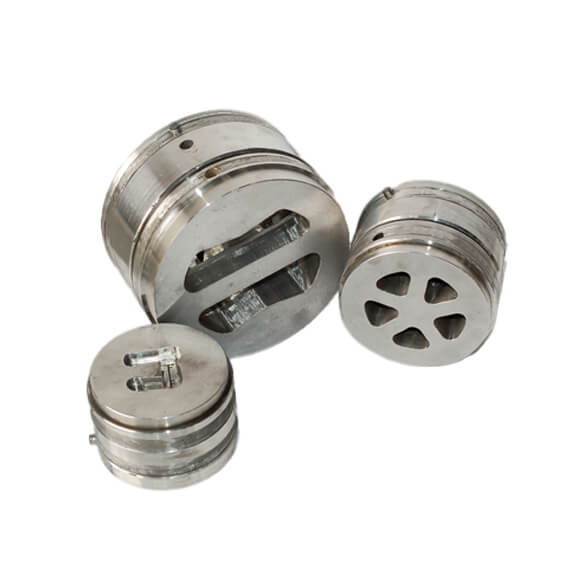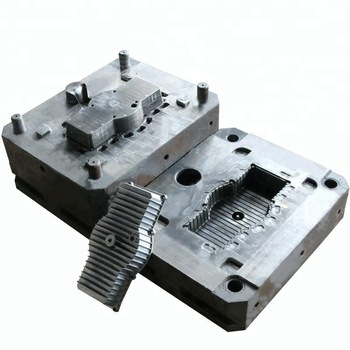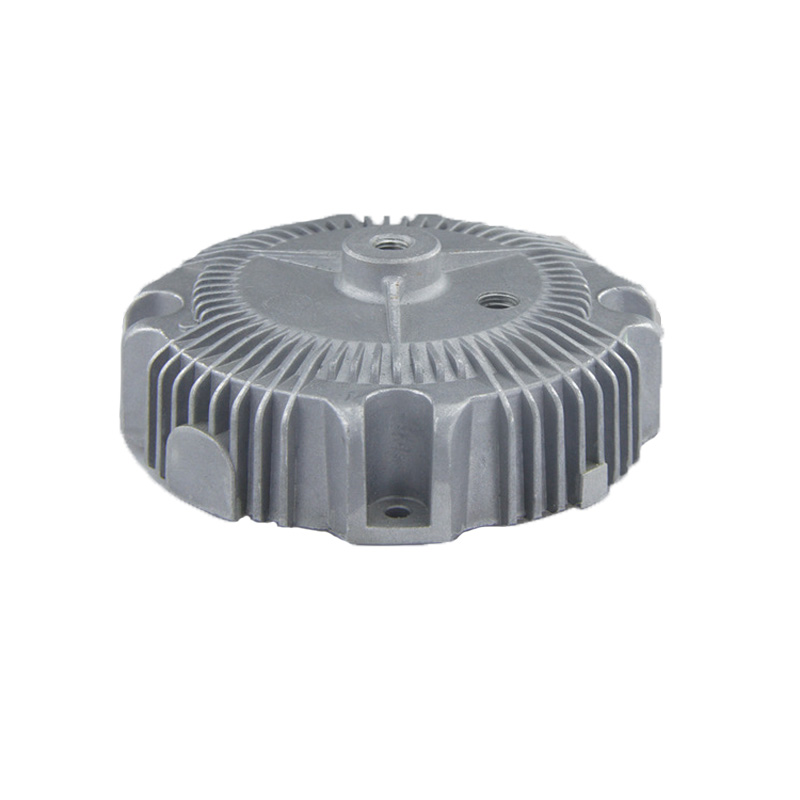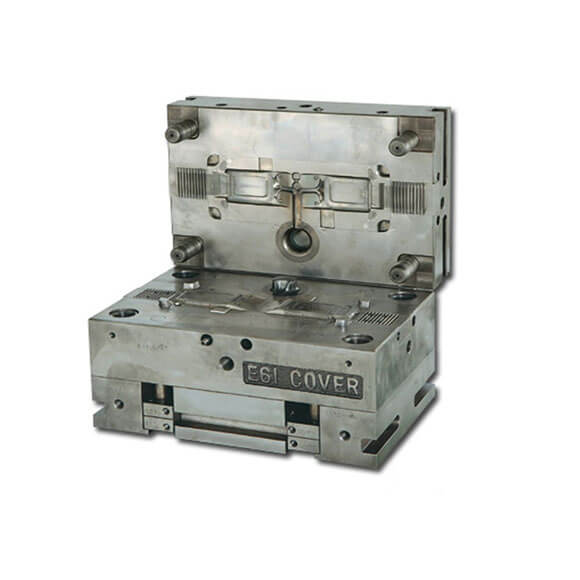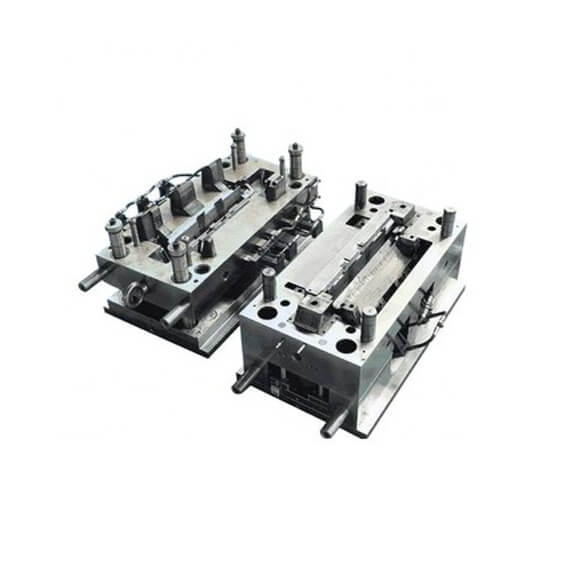Mencari pembekal Mesin Acuan Die Casting? Dengan beratus-ratus mesin CNC, kapasiti dalaman kami yang tiada tandingannya memastikan bahagian anda dihantar tepat waktu, setiap masa. Di Katio, kemudahan pemesinan CNC bersertifikat ISO 9001 kami direka untuk pembuatan prototaip cepat dan pengeluaran komponen akhir yang rendah
Die-casting mold is a tool for casting metal parts, a tool that completes the die-casting process on a special die-casting die forging machine. The basic process of die casting is: the metal liquid is firstly filled into the cavity of the mold at a low or high speed. The loose defect also makes the internal structure of the blank reach the forged broken grains. The comprehensive mechanical properties of the blank have been significantly improved.
New technologies for surface treatment of die-casting molds are divided into three categories:
(1) Improved technology of traditional heat treatment process;
(2) Surface modification technologies, including surface thermal diffusion treatment, surface phase transformation strengthening, electric spark strengthening technology, etc .;
(3) Coating technology, chemical plating, etc.
Acuan die-casting adalah kategori besar dalam acuan. Dengan perkembangan pesat industri automotif dan motosikal global, industri die-casting telah memasuki era pembangunan baru. Pada masa yang sama, keperluan yang lebih tinggi telah diletakkan pada sifat mekanik komprehensif dan kehidupan acuan die-casting. Luo Baihui, Ketua Setiausaha Persatuan Cetakan Antarabangsa, percaya bahawa untuk memenuhi permintaan prestasi yang semakin meningkat, masih sukar untuk memenuhi penggunaan bahan acuan baru sahaja. Pelbagai teknologi rawatan permukaan mesti digunakan untuk rawatan permukaan acuan pemutus mati untuk mencapai kecekapan tinggi acuan pemutus mati, Keperluan tinggi dan jangka hayat yang panjang. Dalam pelbagai acuan, keadaan kerja acuan die-casting agak keras. Penekanan tekanan adalah untuk menjadikan logam lebur memenuhi rongga acuan di bawah tekanan tinggi dan kelajuan tinggi dan die-cast. Berkali-kali bersentuhan dengan logam panas semasa kerja. Oleh itu, acuan die-casting diperlukan untuk mempunyai ketahanan keletihan terma yang tinggi, kekonduksian terma, rintangan haus, dan ketahanan kakisan. , Kekuatan impak, kekerasan merah, sifat pelepasan yang baik, dan lain-lain. Oleh itu, teknologi rawatan permukaan acuan die-casting mesti tinggi.
1.Improved technology of traditional heat treatment process
Proses rawatan haba tradisional untuk acuan die-casting adalah pelindapkejutan. Kemudian, teknologi rawatan permukaan dikembangkan. Oleh kerana pelbagai bahan yang boleh digunakan sebagai acuan die-casting, teknologi dan proses rawatan permukaan yang sama dapat menghasilkan kesan yang berbeza pada bahan yang berbeza. Schoff mencadangkan teknologi pra-perlakuan substrat untuk substrat acuan dan teknologi rawatan permukaan. Berdasarkan proses tradisional, ia mencadangkan teknologi pemprosesan yang sesuai untuk bahan acuan yang berbeza, untuk meningkatkan prestasi acuan dan jangka hayat acuan. Arah pengembangan lain dari peningkatan teknologi rawatan haba adalah menggabungkan proses rawatan haba tradisional dengan proses rawatan permukaan yang maju untuk meningkatkan jangka hayat acuan die casting. Sebagai contoh,
2. Surface modification technology
Surface thermal diffusion technology
This type includes carburizing, nitriding, boronizing and carbonitriding, sulfur carbonitriding, and so on.
Carburizing and carbonitriding
The carburizing process is used in cold, hot work and plastic mold surface strengthening to improve mold life. For example, 3Cr2W8V steel die-casting mold is first carburized, then quenched at 1140 ~ 1150 ℃, tempered twice at 550 ℃, the surface hardness can reach HRC56 ~ 61, which can increase the die life of die-casting non-ferrous metals and its alloys by 1.8 ~ 3.0 . When carburizing, the main process methods include solid powder carburizing, gas carburizing, and vacuum carburizing, ion carburizing, and carbonitriding formed by adding nitrogen in a carburizing atmosphere. Among them, vacuum carburizing and ion carburizing are technologies developed in the past 20 years. This technology has the characteristics of fast carburizing speed, uniform carburizing layer, smooth carbon concentration gradient, and small deformation of the workpiece. It will be on the mold surface, especially precision molds. Play an increasingly important role in surface treatment.
Nitriding and related low temperature thermal diffusion technology
This type includes nitriding, ion nitriding, carbonitriding, oxygen-nitriding, sulfur-nitriding, and sulfur-carbon-nitriding, oxygen-nitrogen-sulfur ternary infiltration and other methods. These methods have simple and convenient treatment process, strong adaptability, low infiltration temperature, generally 480 ~ 600 ℃, small deformation of the workpiece, especially suitable for surface strengthening of precision molds, and high hardness and good wear resistance of nitrided layer. Anti-stick performance.
3Cr2W8V steel die casting mold, after quenching and tempering, 520 ~ 540 ℃ nitriding, the service life is 2 to 3 times longer than the non-nitriding mold. In the United States, many die-casting molds made of H13 steel must be nitrided, and nitriding is used instead of tempering. The surface hardness is as high as HRC65 ~ 70, and the hardness of the core of the mold is low and the toughness is good. Mechanical properties. Nitriding process is a commonly used process for die-casting mold surface treatment. However, when a thin and brittle white bright layer appears on the nitrided layer, it cannot resist the effect of alternating thermal stress, and it is easy to generate microcracks and reduce thermal fatigue resistance. Therefore, in the nitriding process, the process must be strictly controlled to avoid the generation of a brittle layer. Foreign countries have proposed the use of secondary and multiple nitriding processes. The repeated nitriding method can decompose the bright white nitride layer that is easy to produce micro-cracks during service, increase the thickness of the nitriding layer, and at the same time, make the mold surface have a thick residual stress layer, which can significantly improve the life of the mold. In addition, there are methods such as salt bath carbonitriding and salt bath carbonitriding. These processes are widely used abroad and are rare in China. For example, the TFI + ABI process is immersed in an alkaline oxidizing salt bath after nitrocarburizing in a salt bath. The surface of the workpiece is oxidized and appears black, and its wear resistance, corrosion resistance and heat resistance have been improved. The life of the aluminum alloy die-casting mold processed by this method is increased by hundreds of hours. Another example is the oxynit process, which is nitridized after carbonitriding developed by France, and has more characteristics when applied to non-ferrous metal die-casting molds.

